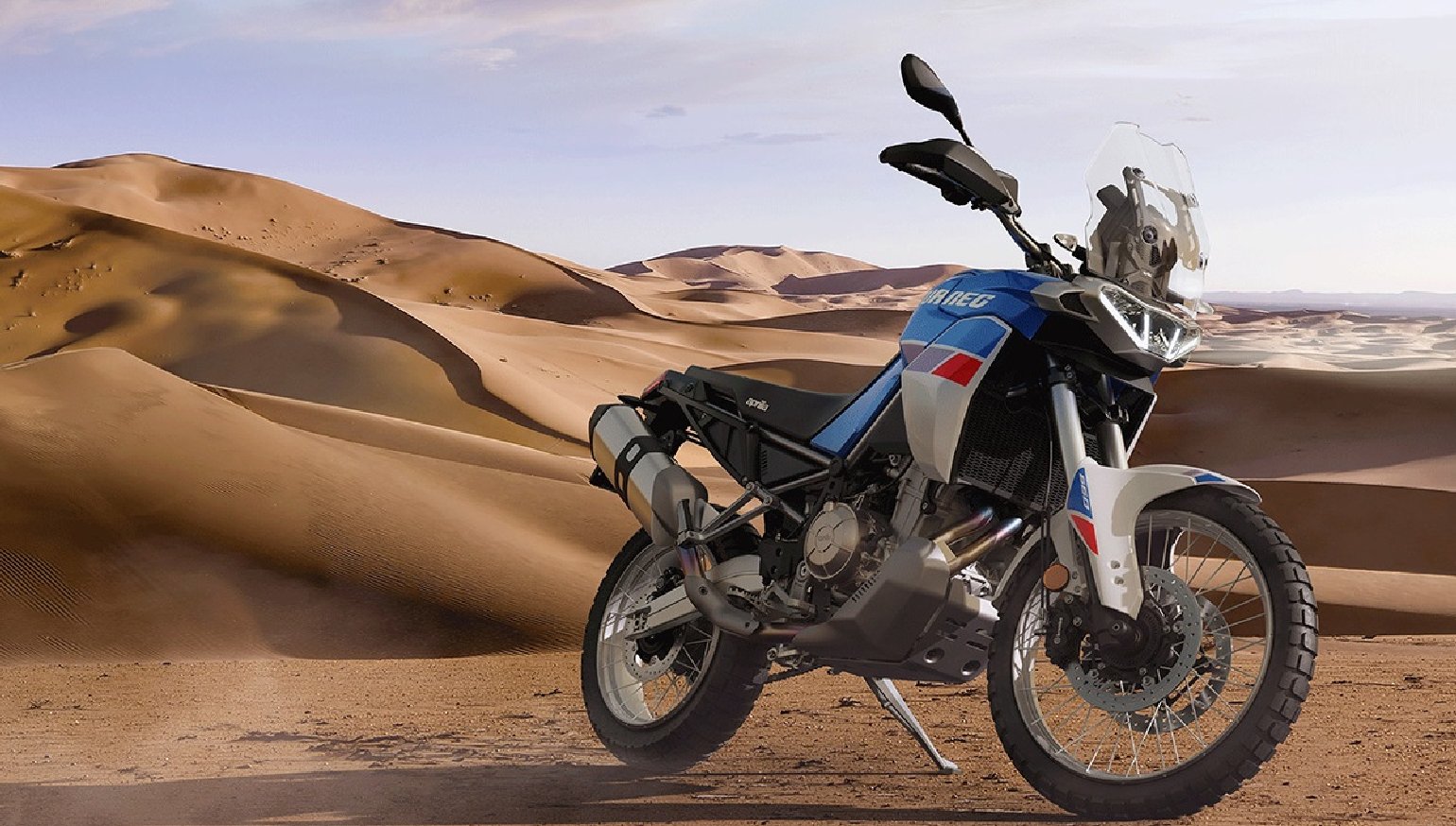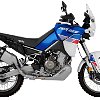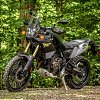Look at the Aprilia Tuareg 660 adventure motorcycle and the first comparison that comes to mind is the Yamaha Ténéré 700.
That's not just because both bikes have "T" names borrowed from the Sahara.
When the Ténéré finally debuted after a long wait, it occupied its own little niche, providing an option for ADV riders who were willing to give up some displacement in exchange for less weight, less complexity and a lower price. On paper, the Tuareg appears to aim pretty close to the Tenere with similar power and weight and a few more features (to put it in positive terms, or more complexity if you have a different mindset). Since the Tuareg (a name Aprilia has revived from its past) is not yet in production, we still don’t know the answer to the big question about price.
Like the Ténéré, the Tuareg is powered by a mid-sized parallel twin. In Aprilia’s case, it’s the 659 cc engine that debuted in the RS 660 that won a positive review from Ari and then appeared in the Tuono 660 Zack loved. In the Tuareg, it’s retuned for adventure duty. While Aprilia claims 100 horsepower and 49 foot-pounds of torque from this engine in the RS 660, for the Tuareg the peak power has dropped to 80 and the torque is up slightly to 51.6 foot-pounds, but arrives at a lower engine speed, which is essential for off-road use. That compares to a claimed 72 horsepower and 50 foot-pounds of torque on the Ténéré 700.
A new steel-tube frame carries the engine in the Tuareg. The 21-inch front and 18-inch rear wheels are matched with suspension that provides 9.4 inches of travel at both ends. Fuel capacity is 4.75 gallons, a little more than the Ténéré’s 4.2.
Aprilia says the package adds up to 412 pounds dry, so I’d expect a weight right in the mid-400-pound range when it’s ready to ride. Again, very close to the Ténéré’s 452-pound claimed weight.

There are a few differences, however, mainly in the electronics. The Tuareg will come with four rider modes, two of which are customizable and one of which is devoted to off-road riding. It also has traction control, ABS that can be turned on, off or on at the front wheel only, and the Tuareg even comes with cruise control. By comparison, the Ténéré comes with no ride modes or traction control and ABS is either on or off at both wheels.
Of course the Ténéré isn’t the only competition for the Tuareg. Features like the longer suspension travel and advanced electronic aids position the Tuareg closer to the KTM 890 Adventure R Spurgeon lusts after. The KTM is equipped with lean-angle-sensitive traction control and ABS and wheelie control, as well as more power, but those features come at a cost. The new 890 Adventure R's MSRP starts at $14,199, 42 percent higher than the Yamaha Ténéré 700's price, which starts at $9,999.

Of the many unknowns regarding the Tuareg, price is the biggest one. Where will it fall on the wide range between those two competitors?
If the Tuareg falls closer to the Yamaha, the Aprilia’s extra features might attract some adventure riders who don’t want to go quite as bare bones as the Ténéré. If it edges close to the KTM in price, however, then it's going to have to compete with a more powerful bike with a solid reputation.
Once we get the final details on the Tuareg, we should begin to see if Aprilia has managed to create another little niche of its own in the adventure-touring world the way the Ténéré did.

 Membership
Membership







